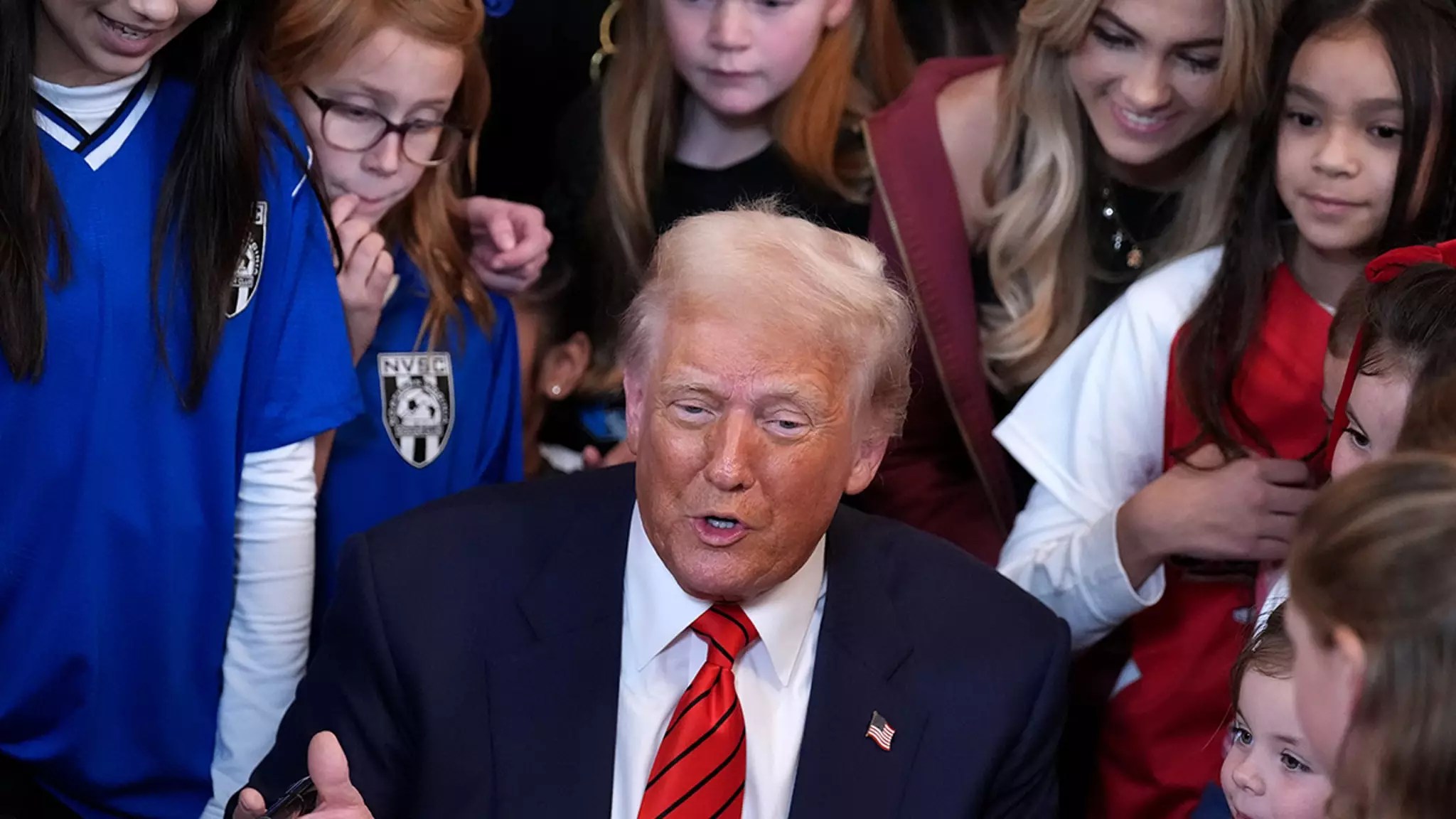On a notable Wednesday, former President Donald Trump made headlines by signing an executive order aimed at reshaping the landscape of women’s sports in the United States. Characterized by his assertive rhetoric, Trump declared his intention to prohibit biological men from participating in competitions designated for women. The order, referred to as the “Keeping Men Out of Women’s Sports” mandate, marks a significant step in the broader discourse surrounding transgender athletes and their right to compete.
This decision reflects a growing trend among conservative lawmakers and advocates who argue that allowing transgender women to compete deprives cisgender women of fair competition. By anchoring this mandate within federal guidelines and the threat of withdrawing federal funding from schools that do not comply, Trump has signaled a hardline approach that prioritizes traditional definitions of gender in sports settings. The implications are profound, not only for schools but also for high-level competitions like the upcoming 2028 Los Angeles Olympic Games.
While Trump’s supporters cheered as he proclaimed that his order would “end” the competitive threat he perceives, opponents voiced deep concerns. Kelley Robinson, President of the Human Rights Campaign, labeled the order as regressive, cautioning that it could further harassment and discrimination against young trans individuals. This highlights a critical tension in the debate: the balancing act between protecting competitive fairness in women’s sports and ensuring the rights and dignity of transgender athletes are upheld.
Furthermore, the dichotomy between competing values—fairness for cisgender women versus inclusive policies for transgender athletes—places educators, sports officials, and policymakers in a precarious position. As they navigate these intricate issues, the consequences of failing to address either side adequately can lead to significant societal repercussions.
Athletes at various levels, including those poised for Olympic glory, are now left in a state of uncertainty. The directive’s potential fallout could lead to a landscape where young athletes are deterred from pursuing sports altogether, particularly those who identify as transgender or non-binary. In an environment that serves as a supportive community for many, Robinson’s assertion that sports help forge connections and teach life skills begs the question: what happens when such avenues are restricted for a segment of the population?
Moreover, Trump’s directive to Secretary of Homeland Security Kristi Noem—targeting visa applications for male athletes posing as women—is another layer of the executive order that intensifies the legal and ethical scrutiny of this issue. It raises questions about enforcement protocols and how to discern eligibility without infringing on the personal identities of athletes.
As this executive order unfolds, it invites further discussions around legislative measures, grassroots activism, and the future of athletics as a microcosm of broader societal debates. Advocates from both sides will likely escalate their efforts, making future confrontations on this topic unavoidable. The challenge lies in crafting policies that thoughtfully reconcile these competing rights while moving beyond mere political posturing. Ultimately, the landscape of women’s sports is at a pivotal crossroads, one that will require dialogue, understanding, and sensitivity as the nation grapples with issues of identity, fairness, and inclusion.







Leave a Reply